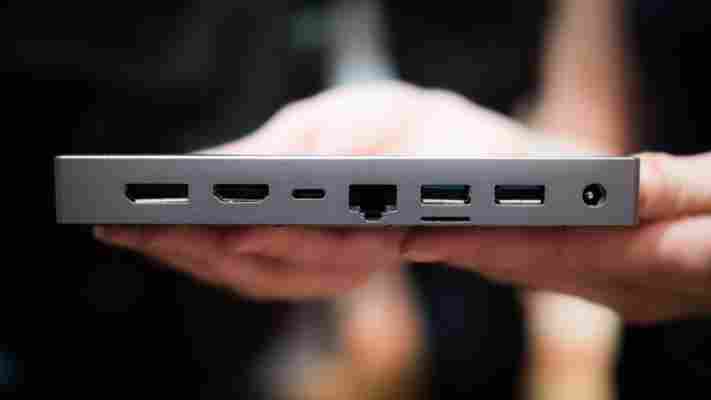Look, I get it. The future is upon us, and everything should be wireless. And for things that don’t need to be, USB-C is an awesome do-it-all port .

But until that single-port future arrives, a lot of us rely on a litany of different connectors. That’s what makes Ockel’s Sirius A so refreshing: it’s a tiny Windows 10 PC the size of a smartphone that still manages to have more ports than most laptops released today.
Ockel gained some recognition for its similarly small Sirius B computer last year, but the Sirius A kicks it up a notch with better specs, more ports, and an touchscreen display.
Seriously, this thing crams in full-size DisplayPort and HDMI ports, Ethernet, two USB 3.0 ports, one USB-C port, a Micro SD slot, and a headphone jack. And yet Apple (and Motorola, LeEco, etc) can’t even manage the headphone jack alone nowadays.
The rest of the specs are as follows:
Intel Atom x7-Z8750 (quad-core)
6-inch 1080p multitouch display
4 GB or 8 GB of RAM
64 GB or 128 GB of eMMC Flash
802.11ac Wi-Fi
Bluetooth 4.2
3,000 mAh battery (3 hours of battery life)
Front facing camera, microphone and speakers
$699 / $799 price
While Microsoft is hard at work bringing full Windows 10 to ARM processors – and therefore, smartphones – the Sirius A uses a more familiar Intel Atom chipset. I’ve previously found Intel’s Atom x7 to be plenty powerful for most productivity applications and video streaming (with less onboard RAM), so I don’t see why that wouldn’t be the case with the Sirius A either.
Of course, there’s the question of who actually needs this small a computer, but Ockel sees a myriad of opportunities. As a full Windows 10 device, it can both run any mobile applications and full-featured desktop ones for a high-powered entertainment station. Or you could use it as a pocketable travel computer that you can hook up to a monitor or TV, or use via the touchscreen in a pinch.
Ockel will throw an HDMI cable in the box too, emphasizing its intended use hooked up to a larger display. The three hour battery life also means it’s not a tablet replacement, but there’s also no tablet with this many ports.
As a neat touch, once the Sirius A is connected to a monitor, it will turn the unit’s display itself into a keyboard and mouse (though, of course, you can plug in your own).
It could make for a useful secondary PC, media hub, or anything you would want a pocketable PC for. The Sirius A recently completed a successful Indiegogo campaign , and units are expected to begin shipping in May.